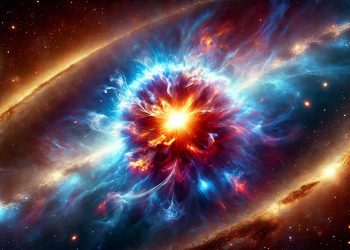Have you ever wondered where we truly reside in the grand scale of the universe? Our cosmic address can be traced through a series of interconnected systems, starting from our home on Earth and moving outward through the Solar System, the Milky Way Galaxy, the Local Cluster, the Virgo Cluster, and finally, the Laniakea Supercluster. However, recent deep sky surveys suggest that our galactic neighborhood may be part of an even larger structure known as the Shapley Concentration.
Unveiling the Shapley Concentration
The Shapley Concentration is an enormous cosmic structure referred to by astronomers as a “basin of attraction.” This region, teeming with mass, exerts a gravitational pull strong enough to influence surrounding galaxies. It is composed of clusters and groups of galaxies, alongside vast amounts of dark matter, forming the densest area in our local universe.
There are multiple basins of attraction scattered throughout the cosmos, each playing a key role in shaping the distribution and motion of galaxies. Among these is Laniakea, the supercluster that contains our Milky Way. By mapping these regions more accurately, scientists hope to gain a clearer understanding of the largest structures that make up our universe.
Mapping the Cosmic Flow
Led by astronomer R. Brent Tully from the University of Hawai’i, a team of researchers known as CosmicFlows has been meticulously studying the movement of more than 56,000 galaxies. Their goal is to map how these galaxies traverse space and to define the boundaries of cosmic basins like the Shapley Concentration. As Tully explains, the universe behaves much like a colossal web, with galaxies lining up along filaments and clustering at nodes, drawn together by gravitational forces.
“Just as rivers flow within watersheds, galaxies flow within cosmic basins of attraction,” Tully notes. This discovery opens up new possibilities for understanding cosmic structure, suggesting that larger, previously unknown basins may exist. These findings were recently published in Nature Astronomy, highlighting the significance of these cosmic flows.
The Shapley Concentration: A New Attractor?
The CosmicFlows team’s redshift surveys have hinted that our local basin of attraction might be larger than previously thought. While we already know that Laniakea spans roughly 500 million light-years, recent data suggest that an even greater structure, the Shapley Concentration, could be pulling on our galaxy. This superstructure might be up to ten times the size of Laniakea, and while not as vast as the colossal “Great Wall” of galaxies, it remains a formidable force, extending across 1.4 billion light-years.
First identified by astronomer Harlow Shapley in the 1930s, the Shapley Concentration was observed as a “cloud” in the constellation Centaurus. Its position corresponds to the motion of our Local Group of galaxies, leading scientists to speculate that it may be responsible for our galaxy’s peculiar motion.
Interestingly, the Virgo Supercluster—home to the Local Group and the Milky Way—appears to be moving toward this immense attractor. Surveys conducted by Tully and his colleagues aim to verify this motion, shedding light on the gravitational influence pulling us toward this cosmic giant.
The Ancient Origins of Cosmic Basins
Where do these massive cosmic structures come from? The seeds for these basins of attraction were sown nearly 13.8 billion years ago, in the aftermath of the Big Bang. As the universe expanded and cooled, matter began to clump together in specific regions, giving rise to the galaxies, clusters, and superclusters that form today’s cosmic web.
Astronomers now face the challenge of explaining these structures, as traditional cosmological models may not fully account for the vastness of regions like the Shapley Concentration. According to University of Hawai’i astronomer Ehsan Kourkchi, “Our cosmic surveys may not yet be large enough to map the full extent of these immense basins. We are still gazing through giant eyes, but even these eyes may not be big enough to capture the full picture of our universe.”
Mapping the Universe in 3D
Gravity plays the leading role in determining the motions of galaxies, clusters, and superclusters. By analyzing redshift data, Tully’s team can chart how these galaxies move relative to one another, taking into account not only visible matter but also the elusive dark matter that pervades these regions.
The team also measures “peculiar velocities”—the deviations from the standard Hubble flow—caused by gravitational interactions between galaxies. These measurements allow for more precise 3D maps of the local universe, providing deeper insights into the distribution of matter, including dark matter, across the cosmos.
In the coming years, these surveys will continue to refine our understanding of the universe’s largest structures, potentially reshaping our view of how galaxies are influenced by cosmic basins of attraction. As astronomers map the intricate web of galactic flows, we inch closer to grasping the full scope of the cosmos we call home.











